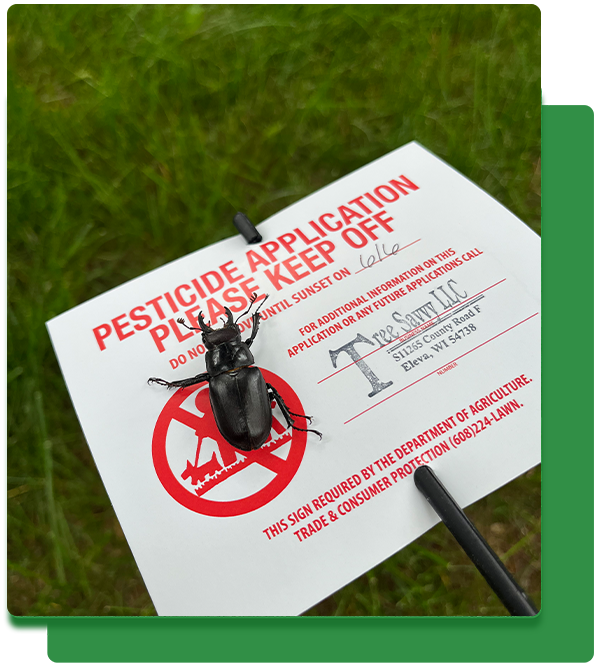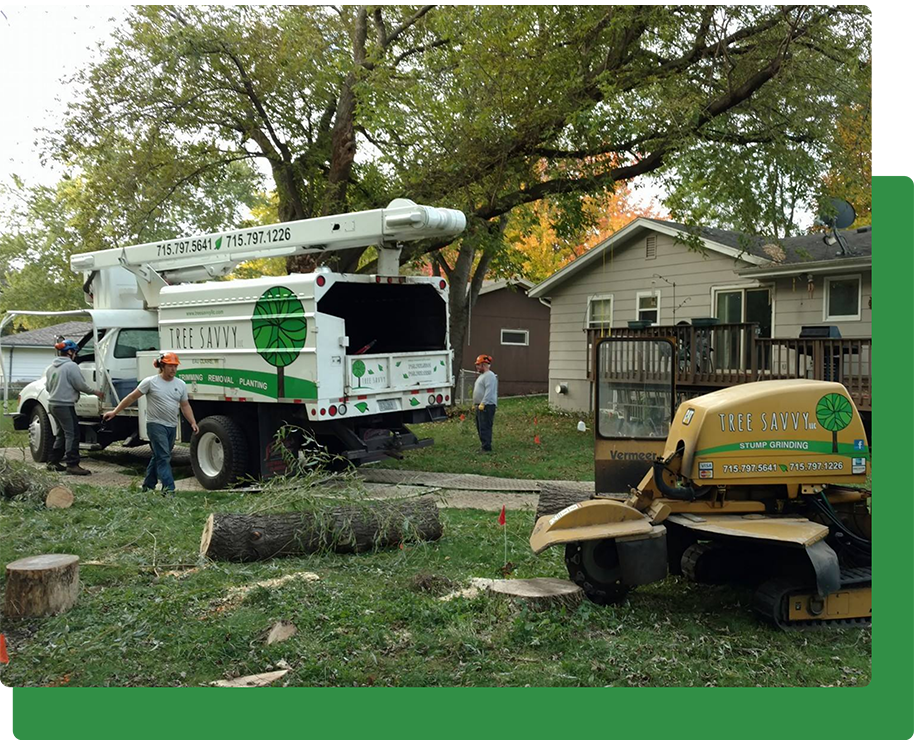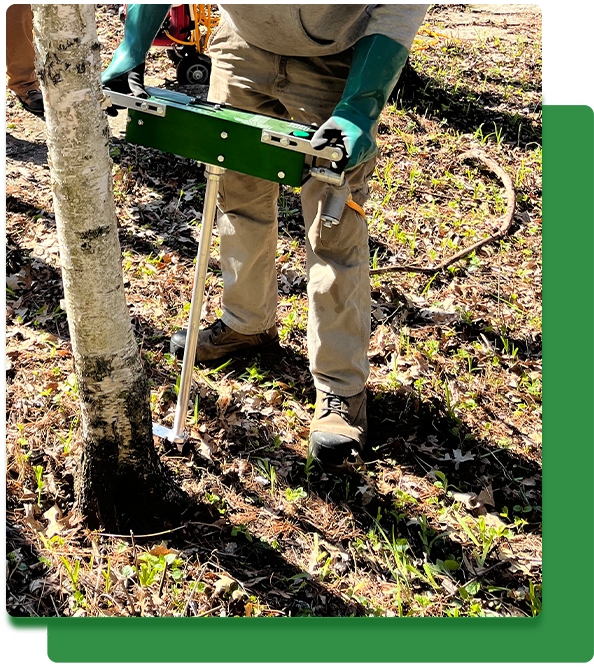
Japanese Beetle
The Japanese beetle (Papilla japonica) is an invasive species common in our area. Originating in Japan and first introduced in the United States in 1916, the Japanese beetle has since spread westward and currently resides in every state east of the Mississippi except Florida.
Japanese beetles are easily recognizable due to their distinctive appearance. Adults are approximately 1/2” long with an iridescent green body and copper-colored wings. A row of five small white tufts of hair along each side of the abdomen further distinguish them. These beetles are active during the day, and are often found gathering on plants in large numbers.

Signs of Damage
Japanese beetles are not a host-specific pest, meaning that they feed on a number (over 400 species) of common shade trees and ornamental plants. Specific to our region, the Japanese beetle is frequently seen on Linden, Crabapple, Elm, and Birch trees. Some of the signs of a Japanese beetle infestation include:
- Defoliation of the canopy
- “Lacing” of individual leaves (beetles eat the tissue between the veins of leaves, resulting in a skeleton appearance)
- From a distance, severely attacked trees look to be scorched by fire
- Seeing the actual beetles, often in large quantities

Means of Mitigation
Japanese beetle infestations are quickly identifiable, and thus fairly easy to combat and prevent. Some of the best means of treatment that Tree Savvy can offer include:
- Soil-applied insecticide (Xytect 2F for non-flowering trees)
- Soil-applied insecticide (Lepitect for flowering trees)
While treatments can be made once an active infestation prevents itself, most treatments are made preventatively. The species of tree will dictate the appropriate product to use, and the product used will therefore determine the best timing for treatment. For non-flowering trees, treatments should be made in late fall or early spring, whereas treatments for flowering trees should take place in early June (but is also dependent on weather patterns.)
